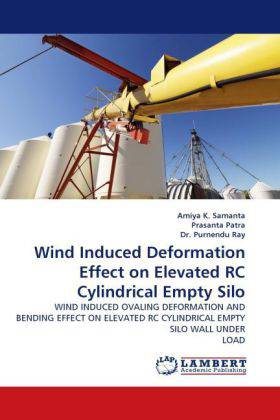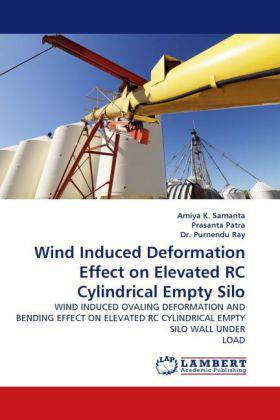
- Afhalen na 1 uur in een winkel met voorraad
- Gratis thuislevering in België vanaf € 30
- Ruim aanbod met 7 miljoen producten
- Afhalen na 1 uur in een winkel met voorraad
- Gratis thuislevering in België vanaf € 30
- Ruim aanbod met 7 miljoen producten
Zoeken
Wind Induced Deformation Effect on Elevated RC Cylindrical Empty Silo
WIND INDUCED OVALING DEFORMATION AND BENDING EFFECT ON ELEVATED RC CYLINDRICAL EMPTY SILO WALL UNDER LOAD
Amiya K. Samanta, Prasanta Patra, Dr. Purnendu Ray
Paperback | Engels
€ 79,45
+ 158 punten
Omschrijving
This investigation presents the effect of ovalisation of circular cylindrical wall of ground elevated reinforced concrete(RC) silo under wind load using an analytical/approximate and a numerical/finite element model in Abaqus. A few case studies have been carried out using the wind load distribution as per relevant Bureau of Indian Standard(BIS) code of practice. Results obtained from the three dimensional finite element model of the silo clearly support the fact of transverse bending of the silo wall. It also shows that the values of deformation and stresses obtained thus is much on lower end compared to the results of analytical model in bending of silo wall in transverse direction. A critical band /zone of influence has been derived where the effect of ovalisation is found to be significant along the height of the silo wall. The present wok also proposes graphs /charts to derive a modification factor over the values obtained by analytical /approximate method so that the designers may take appropriate measures in the process of designing and detailing of the silo wall under wind load without going for detail investigation of the model under consideration.
Specificaties
Betrokkenen
- Auteur(s):
- Uitgeverij:
Inhoud
- Aantal bladzijden:
- 136
- Taal:
- Engels
Eigenschappen
- Productcode (EAN):
- 9783843371490
- Verschijningsdatum:
- 16/11/2010
- Uitvoering:
- Paperback
- Afmetingen:
- 150 mm x 220 mm
- Gewicht:
- 209 g

Alleen bij Standaard Boekhandel
+ 158 punten op je klantenkaart van Standaard Boekhandel
Beoordelingen
We publiceren alleen reviews die voldoen aan de voorwaarden voor reviews. Bekijk onze voorwaarden voor reviews.











